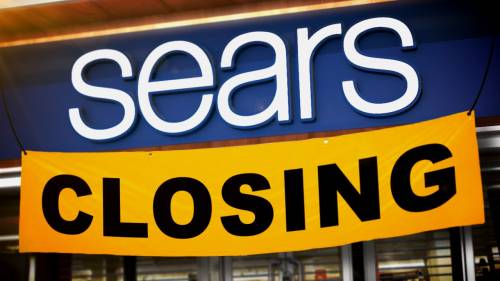Are you a Sears or an Amazon?
Churches need to adapt to a changing world
by Richard Hong

Christmas is coming! Even though I don’t know what I’ll be buying for the people on my list, I am pretty sure I know where I’ll be buying it: Amazon. Like many other people, I have done virtually all of my shopping on Amazon for years.
As I think about Amazon, I think about the company that probably should have been Amazon: Sears. In 1886, Richard Sears was working for a railroad when there was an unwanted shipment of watches from a Chicago jewelry company. He bought them at a discount, then sold them up and down the line. He saw the value of taking product to the customers.
Finally, Sears quit his job and began expanding his business. In 1887 he hired Alvah Roebuck, and they started selling an ever-increasing variety goods to rural farmers who had been paying exorbitant prices to their local stores. By 1895, the Sears catalog had 592 pages.
Sears did not open their first store until 1925. As suburban sprawl developed, Sears began increasing the number of stores and the catalog business declined.
By the late 1960s they were the world’s largest retailer. They built the Sears Tower in Chicago (now called Willis Tower); at its completion in 1973 it was the tallest building in the world. It was Sears that created the Discover Card.
What could have been
In 1993, believing that the future of retail was in brick-and-mortar stores, Sears discontinued the Sears Catalog. In 1994, Amazon was founded. As I am writing this, a news flash appeared on my phone: “Sears Bankruptcy Imminent.”
Sears should have been Amazon. For all intents and purposes, the Sears catalog was Amazon. It had just about everything. You ordered it remotely and it was delivered to your door.
What should we learn from this? There is a danger of seeing what you want to see in the story. You could say that Sears should have stuck with their roots and simply remained a catalog company. But had they done that, they would not have survived the slump in mail order and they would have missed the rise of malls.
What Sears really needed to be was a mail order company, then a retail company, then an Internet company.
Adapt or fail
Sears succeeded when they were watching for needs and adapting. Their first catalog was only watches and jewelry. Paying attention to the needs of rural farmers expanded their offerings. They followed their customers into the suburbs.
Sears was actually the first retail chain to have a “store planning and display” department. Instead of fitting merchandise into the layouts of their various facilities, they refitted buildings around their desired merchandise layouts. They adapted the building to the merchandise, not the other way around.
By the 1990s, Sears had become wedded to its image of itself as an operator of retail stores. Protecting their retail operation became their mission. Meanwhile, Amazon became the new Sears catalog, using a novel medium called the Internet.
Church, are you being Sears or Amazon? Has your identity become enmeshed with things that are not central to your mission? What are you defending/sustaining “at all costs” without seeing if there are new ways of living into your mission? Are you wedded to a style of worship, a worship time, or even the idea that worship has to be in a certain place? Are you sustaining programs that stopped being in demand years ago?
Watch The Trends
Are you watching the trends that are larger than your church? Are you listening for the needs of people outside your church? I can guarantee you that having worship at 11 a.m. on Sunday works … for people who are there at 11 a.m. on Sunday.
Parenting styles are different than they were. Educational styles are different than they were. Is your church school keeping up? Are you ready to adapt? Are your leadership structures adapting to changes in the peoples’ availability to help?
Every time you are ready to say, “People just don’t (do whatever) anymore,” ask yourself: “What can we change to accommodate them?”
We have a core mission: to spread the Gospel and make disciples. Doing that effectively in ever-changing times means being willing to adapt to prevailing trends, in order to keep up with the people God loves, whom we are trying to reach.
 The Rev. Richard Hong is pastor of First Presbyterian Church of Englewood, New Jersey. He is excited to be blogging about his passion for the church for Presbyterians Today. Hong’s areas of interest are church technology, leadership and church growth. If there’s a particular topic you’d like to for him to address, contact him at rich@englewoodpres.org.
The Rev. Richard Hong is pastor of First Presbyterian Church of Englewood, New Jersey. He is excited to be blogging about his passion for the church for Presbyterians Today. Hong’s areas of interest are church technology, leadership and church growth. If there’s a particular topic you’d like to for him to address, contact him at rich@englewoodpres.org.